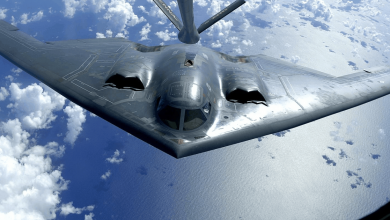Serbia Seen Integrating Soviet-Era Kh-31 Missiles Into MiG-29 Fleet

Serbia appears to be integrating Soviet-designed Kh-31 anti-radar missiles into its MiG-29 fighter jets, according to footage released by aviation enthusiasts in early February 2025.
The videos from early February 2025, shot at Batajnica Air Base near Belgrade, show MiG-29s equipped with the Kh-31, a capability never previously reported by Serbian authorities.
The work on this integration has not been officially announced, nor has there been any information about it in the media.
Neither Serbia nor its predecessor Yugoslavia had Kh-31 missiles or aircraft that could potentially use them.
The original MiG-29 variants operated by Serbia (9-12 and 9-13) were not configured to use guided air-to-surface missiles like the Kh-31.
Originally, Kh-31P missiles were deployed from Soviet aircraft such as the Su-17M, Su-24, and MiG-27, and later adapted for newer platforms like the Su-30, Su-34, and Su-35.
The anti-ship Kh-31A variant was integrated into carrier-based MiG-29K and Su-27K aircraft, which could also be carriers of the Kh-31P.
The original MiG-29s in the 9-12 and 9-13 versions did not have this capability. Back in the Soviet period, the creation of the 9-14 variant with the possibility of using guided weapons against ground targets was being worked on.
A more advanced MiG-29 variant, the 9-14, was developed in the Soviet era with upgraded systems, such as the Ryabina targeting suite and Progress-N guidance system, enabling use of the Kh-31P.
However, only one such aircraft was ever built (and received number 407), and Serbia is not known to have acquired or upgraded its fleet to this standard.
Ukrainian MiG-29s have been adapted to carry American AGM-88 HARM missiles, suggesting that the Serbian defense industry may have carried out a similar modification for the Kh-31.
The origin of Serbia’s Kh-31 missiles remains unclear. Russia delivered six MiG-29s to Serbia in 2016 under a military assistance agreement, and Belarus provided four more.
Other known operators of the Kh-31 include Algeria, Vietnam, Venezuela, India, Kazakhstan, China, and Syria.
Kh-31 missiles
Soviet-Russian guided tactical air-to-surface missiles were produced in two versions:
- anti-radar Kh-31P and its modifications;
- anti-ship Kh-31A and its modifications.
They belong to a family of supersonic air-to-surface missiles developed in the Soviet Union, the average speed is 600-700 m/s.
The anti-radar Kh-31P variant has a range of up to 110 km, extended to 180–250 km in its Kh-31PD version. The anti-ship Kh-31A has a maximum range of 70 km, with later variants reaching up to 120-160 km.
Russia has used Kh-31 missiles extensively in its war against Ukraine since 2022.





